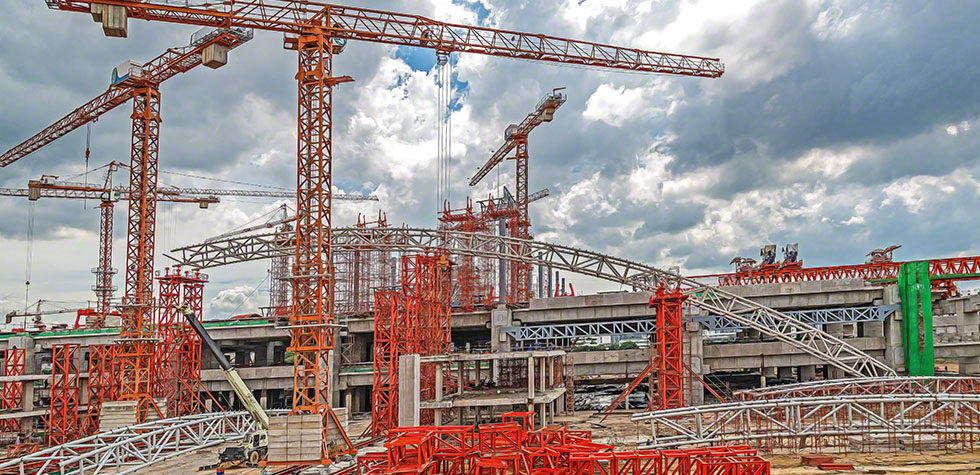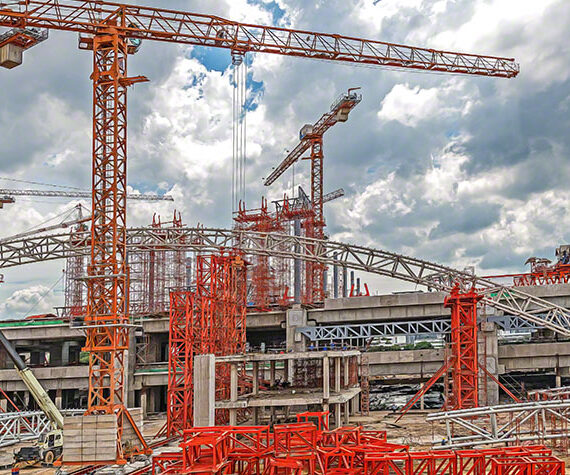A crane comprises several different components that work together to perform heavy lifting and shifting tasks. With that said, you might have observed a long arm stretching into the sky in most cases during crane rigging and construction works, making you wonder what it is and how it works? Read on to learn how a crane boom works and takes on different appearances based on the type of crane being used.
How Does A Crane Boom Work?
There are two types of crane booms that are most commonly used known as hydraulic and lattice booms. Even though they are designed to perform more or less the same lifting tasks but tend to work differently.
Lattice Booms
To begin with, lattice booms are identified by multiple steel bars that are welded together to form a “V” or “W” pattern. This pattern is intended to increase the strength of the boom while minimizing its weight. As a result, lattice booms tend to be an ideal option for crawler and tower cranes.
Furthermore, lattice booms are designed to remain at a fixed length. They move while being fixed from one end. Since the majority of large cranes consist of lattice booms, the operators must be careful when it comes to lifting heavy loads at a calculated angle of tilt while ensuring the crane remains stable.
Meanwhile, the operator’s cab consists of joysticks, buttons, and a computer safety system that allows the operator to operate the boom and keep the surroundings in check for safety and security.
Hydraulic Boom
Hydraulic booms when compared to lattice booms tend to work differently as mentioned earlier. Unlike lattice booms, hydraulic booms can extend and retract to different lengths for transport. In most cases, cranes with hydraulic booms are identified by a pole-like or telescopic appearance with a powerful hydraulic system
This hydraulic system consists of pistons and cylinders that contain hydraulic fluid. The crane boom extends or retracts with the help of a pump that generates pressure while pushing the piston in and out. Hydraulic booms are mostly telescopic crane booms. In some cases, they are also used for folding crane booms.
Folding crane booms are foldable and are suitable sites with less space. Plus, these cranes utilize the same hydraulic system but come with relatively more hydraulic cylinders to operate.
Other Important Crane Components
Jib
It is often that the jib is confused with the boom of the crane due to their similar appearance. When it comes to lattice cranes, the jib extends from the boom to offer extra distance between the crane’s main support system and the load. Moreover, jibs are most commonly found on tower cranes and can be detached to carry out other types of tasks.
Counterweight And Outriggers
The counterweights and outriggers are designed to help cranes remain stable while lifting heavyweights. In the absence of the counterweights, the crane can easily tip over. Furthermore, counterweights are usually mounted behind the boom on a crane and are both stackable and removable to work with different-sized loads.
Wire Rope
Wire ropes are metal cables that are used by cranes to lift and shift heavy loads. Wire ropes are made using multiple steel wires twisted into a helix around a core. As a result, these wires are designed to withstand extreme stress without breaking. In addition to that, the wire rope runs along with the boom and tends to be the main component of a crane hoist, which is responsible for both lifting and lowering loads.
However, with time wire ropes tend to wear out and develop cracks or damages that might make lifting heavy objects risky. Therefore, it is important that the wire ropes are regularly inspected and replaced to avoid serious consequences.
Final Word
That’s all about types of crane booms and how they work. Understanding the basics surrounding cranes is important when it comes to selecting the best option for construction tasks. This not only helps you get the job done effectively but also allows you to manage your budget wisely. Moreover, when selecting a crane or cranes for your site, look for crane rental services VA that are renowned in the industry. They’ll have well-maintained cranes, equipment, and experts for crane operation and rigging.



